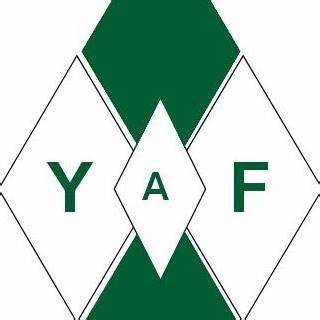Title Page
-
Site conducted
-
Conducted on
-
Prepared by
-
Location
General
-
Personal protective equipment (PPE) is used only to supplement other safety measures when these measures are insufficient or during the time while these measures are being put in place.
-
If it is necessary, personal protective equipment (PPE) is provided by the company and worn by workers. The types used are appropriate for the work and give adequate protection.
-
Workers use only approved PPE in accordance with the manufacturer’s instructions.
-
Any employee-owned PPE complies with the same requirements as company-owned PPE.
-
PPE supplied by company, not recommended to use employee-owned PPE.
-
PPE is maintained in safe and sanitary condition.
-
PPE is reasonably comfortable and isn’t unnecessarily awkward.
HAZARD IDENTIFICATION
-
Click + to add a hazard
Hazard
-
Identify hazards
- Flying or falling objects
- Electrical shock and electrical burns
- Other burns, cuts, radioactive materials
- Flying particles (e.g. grinding, sawing, drilling)
- Hazardous or injurious substances
- Projections eye and face
- Injurious light rays
- Hot surfaces, crushing or penetrating actions, wet locations
- Work over water life preservers (personal flotation devices)
- Others
-
Other hazard identified
-
List PPE to protect workers from hazards
HEAD PROTECTION
-
Employees are required to wear bump hats if going in the machines with risk of hitting hat. (Low care and Engineering)
-
Head protection complies with regulatory standards.
-
Helmet suspensions and liners are in good condition.
-
Employees are wearing hair net inside the production area.
-
Employees are protected from falling objects by guardrails, toeboards, and other safety equipment and practices.
EYE AND FACE PROTECTION
-
Workers who are at risk of eye injury due to flying particles, hazardous substances, or projections are provided and use suitable eye and/or face protection.
-
Protective eyewear used on the site complies with the regulatory requirements and standards.
-
Impact resistant safety glasses with side shields, or impact resistant goggles, are used for chipping, grinding, sawing, drilling, and other operations where there is a danger of flying fragments, chips, or other particles.
-
Only splash resistant goggles are used when working with acids and other hazardous liquid chemicals. (Splash resistant goggles are either unventilated, or have indirect ventilation.)
-
Employees doing welding use welding goggles with filter lenses or plates to screen out harmful light and ultraviolet rays. Goggles used are appropriate for the specific type of welding.
-
Employees who use vision correcting glasses and need job site eye protection are provided with goggles with suitable corrective lenses or goggles to fit over the employee’s own glasses.
-
Contact lenses are not used on the site unless medically approved precautionary measures are taken.
HAND PROTECTION
-
When work involves potential risk of cuts, burns, harmful physical or chemical agents, workers are provided and use appropriate hand protection. (Exception: Not required if gloves might become caught in moving parts or machinery).
-
Employees wear impermeable gloves of the correct type to prevent skin contact with hazardous substances, and replace used gloves as required.
-
Employee in packing and warehouse area wear suitable gloves when handling boxes, wooden pallets and sharps. Note: Nylon gloves are only suitable in low care.
-
Welders use non-flammable gloves with gauntlets.
-
Employees use insulated gloves for contact with frozen materials and hot surfaces.
-
Gloves are not used to replace other required safety measures.
FOOT PROTECTION
-
Workers exposed to potential foot injuries from crushing or penetrating actions, hot surfaces, falling objects, or hazardous substances, or who are required to work in abnormally wet locations, are provided and use appropriate foot protection such as steel-toed safety shoes and/or boots.
-
Protective footwear used on the site complies with the regulatory requirements and standards.
-
Workers using jackhammers wear a steel covering over the whole foot, not just the toes.
-
Rubber boots are worn when working with concrete or in water (in high and medium care)
BODY PROTECTION
-
When necessary, employees are provided and use appropriate body protection. (Depending on the hazard, this may include an apron, coveralls, or a full body suit which can protect against toxic substances, steam, oil, water, and extreme heat or cold.)
-
Employees wear clothing appropriate for the work being done. For example, loose clothing isn’t worn around machinery in which it might become entangled.
-
Welders wear leather aprons, and shirts with long sleeves and collars, as well as required head, face, eye, hand, foot, and respiratory protection.
-
Workers wear bright orange/yellow warning garments (shirts, vests, jackets) when they work on foot near vehicular traffic hazards. In rainy weather, they wear orange or yellow raingear. During hours of darkness, they wear reflectorized clothing.
CLEANUP
-
Employees are instructed to wash promptly and thoroughly after exposure to injurious substances, regardless of the type of protective clothing or equipment which has been used.
-
Clothing which becomes saturated or impregnated with flammable liquids, corrosive substances, irritants, oxidizing agents, or other hazardous chemicals is promptly removed and not worn until cleaned.
Recommendation
-
Write recommendations here
Completion
-
Full Name and Signature of Inspector
-
undefined














